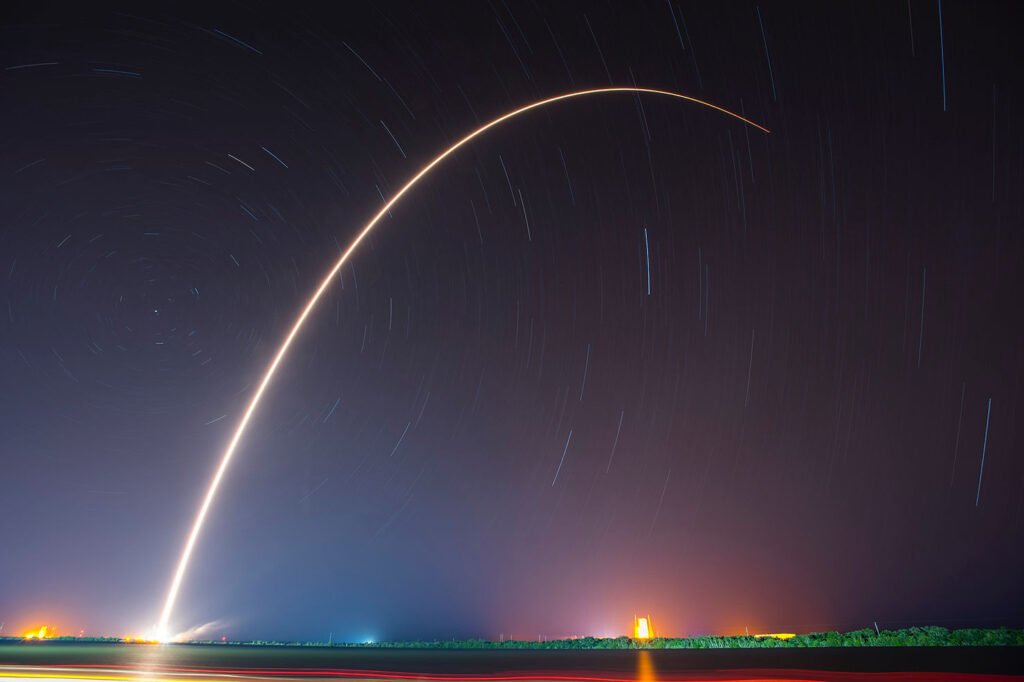Tokyo, Japan – June 6, 2025
Ispace Inc., the Tokyo-based lunar exploration company, has confirmed the unsuccessful conclusion of its second lunar landing mission, known as Mission 2. The RESILIENCE lander, central to the mission, ceased communications shortly after initiating its landing sequence, leading the company to declare the attempt a failure. The lander is presumed to have performed a “hard landing“, impacting the Moon’s surface in the Mare Frigoris region, a relatively flat lunar plain.
Despite this setback, Ispace has reaffirmed its long-term commitment to lunar exploration, citing the resilience embedded in both its mission naming and organizational ethos.
Mission 2: A Detailed Timeline of Events
Mission 2 began its final descent in the early hours of June 6 (Japan Standard Time), with commands for the landing sequence transmitted at 3:13 a.m. The spacecraft executed its descent from an orbital altitude of approximately 100 kilometers to 20 kilometers, engaging its main engine to reduce velocity in preparation for touchdown.
Telemetry indicated that the lander maintained a near-vertical orientation—a key requirement for a controlled landing. However, contact was lost shortly afterward. According to Ispace’s preliminary analysis, a malfunction in the lander’s laser rangefinder, which delayed accurate altitude readings, resulted in insufficient deceleration. This likely led to an uncontrolled impact with the lunar surface.
Efforts to re-establish communication, including a command to reboot the lander, were unsuccessful. CEO and Founder Takeshi Hakamada emphasized the importance of analyzing the collected data, stating:
“Our top priority is to swiftly analyze the telemetry data we have obtained thus far and work diligently to identify the cause.”
Learning from Failure: A Strategic Perspective
This marks Ispace’s second unsuccessful lunar landing attempt, following the crash of its Hakuto-R lander in 2023 due to a software miscalculation. Despite these outcomes, the company maintains a forward-looking strategy. Hakamada acknowledged the gravity of two consecutive failures but pointed to the iterative nature of space exploration.
“SpaceX also failed several times, but now dominates the launch market,” he noted, referencing the American company’s early challenges with its Falcon 1 rocket.
Ispace’s CFO, Jumpei Nozaki, confirmed that funding for a third mission—Apex 1.0—is secured and remains unaffected by the recent failure. This mission, a collaboration with U.S.-based Draper, is scheduled to launch as early as 2027 and aims to land on the Moon’s far side.
A Culture of Resilience and Innovation
With the motto “Never Quit the Lunar Quest”, Ispace’s Mission 2 was intended to showcase technological and organizational growth following the 2023 setback. The name “RESILIENCE” reflects not just a branding choice but an expression of the company’s strategic posture. Hakamada emphasized a need to rebuild trust among stakeholders, pledging transparency in the upcoming investigation into the failure.
Chief Technology Officer Ryo Ujiie noted that while the telemetry from Mission 2 differs from that of Hakuto-R, both cases underscore the complexity of lunar operations.
“We are committed to ensuring that similar issues don’t impact Apex 1.0,” he added.
Ispace will once again seek assistance from NASA’s Lunar Reconnaissance Orbiter (LRO) to capture imagery that may confirm the lander’s final position and condition. The LRO previously helped verify the crash site of Hakuto-R.
The Enduring Challenge of Lunar Landings
The failure of Mission 2 underscores the high-risk nature of lunar landings. More than half of all attempts to land on the Moon have ended in failure—a statistic that has remained stubbornly high since the 1960s. Although significant advances in spaceflight technology have been achieved, landing on the Moon remains an exceptionally difficult task.
The lunar surface poses a unique set of challenges: treacherous topography, long communication delays, and extreme thermal conditions. Even relatively smooth regions like Mare Frigoris can conceal hazards capable of compromising landing success. In the case of RESILIENCE, a low-energy transfer trajectory extended the total travel distance, compounding the mission’s technical demands.
Looking Ahead: Vision for a Lunar Economy
Founded with the vision to “Expand our planet. Expand our future,” Ispace positions itself as a pioneer in the emerging lunar economy. The company specializes in the development of lunar landers and rovers, and aims to provide high-frequency, low-cost transportation services to the Moon—an essential capability for future lunar resource development and habitation.
Operating across Japan, Luxembourg, and the United States, and employing over 300 people, Ispace remains steadfast in its mission despite recent setbacks. With its third mission on the horizon, the company continues to build toward a future in which lunar logistics and infrastructure will form the backbone of humanity’s extraterrestrial presence.
Conclusion
Ispace’s Mission 2 may not have achieved its intended lunar landing, but it reinforces a critical truth in space exploration: progress is often paved with setbacks. By maintaining a transparent, data-driven approach and committing to continuous improvement, Ispace strengthens its credibility as a serious player in the commercial space sector. As the global race to the Moon accelerates, resilience—true to the mission’s name—remains the company’s most vital asset.



